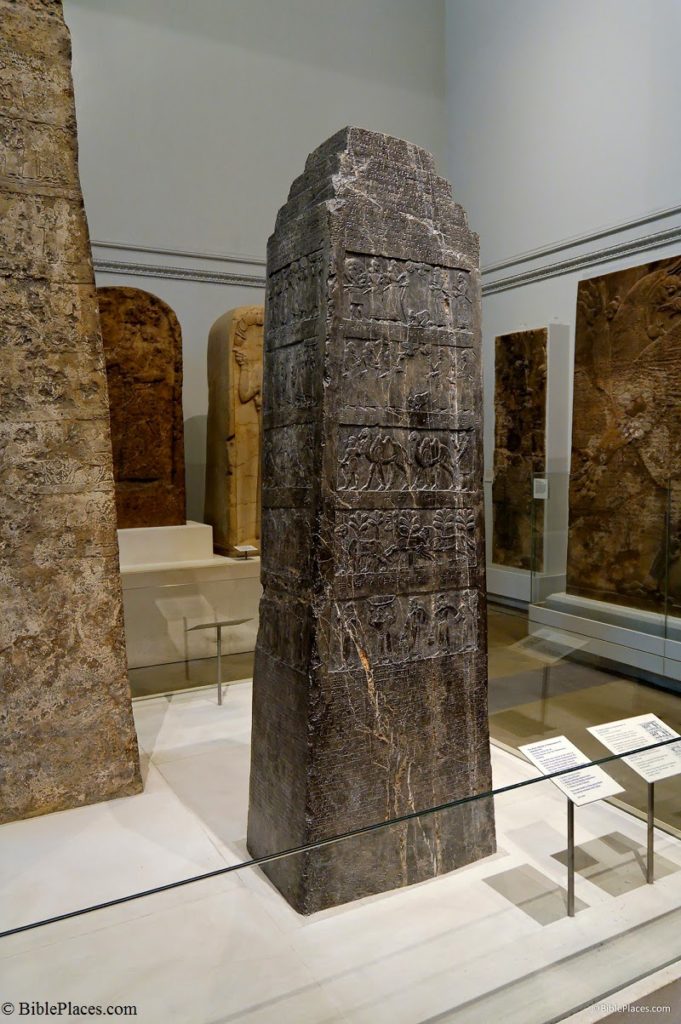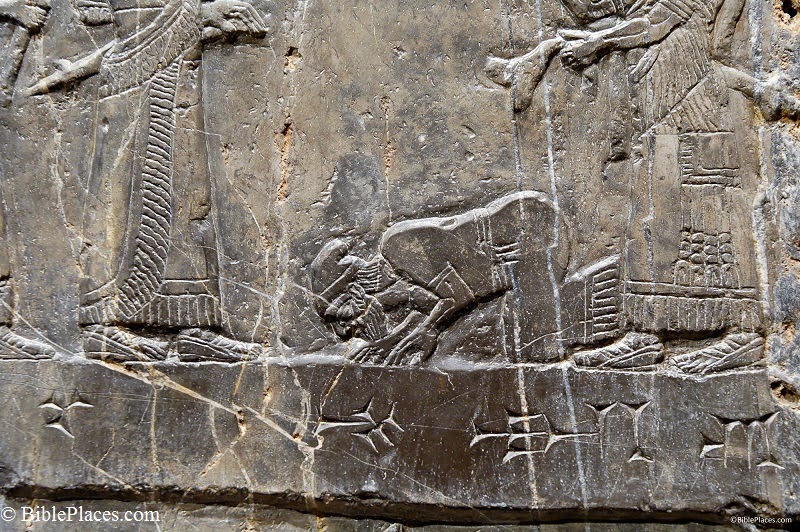 (Posted by Michael J. Caba)
(Posted by Michael J. Caba)The Black Obelisk of Shalmaneser III was made in c. 827 BC in ancient Assyria. It is about six and a half feet tall and a full photo is shown to the left. It is made of fine grained black limestone and it refers to both King Jehu and King Omri. These Israelite kings are also referred to frequently in the Bible (cf. 1 & 2 Kings). The obelisk was found in 1846 in Nimrud (ancient Calah) and is now on display in the British Museum.
The obelisk has the overall shape of a ziggurat with the top being finished with narrowing stepped platforms. Each of its four sides has 5 panels that show individuals bringing tribute to Shalmaneser. The inscriptions tell of Shalmaneser’s military victories and cover 31 years of his reign.
The following photo is a close-up of one of the panels showing an Israelite (either King Jehu or an emissary) bowing to the king of Assyria. The cuneiform text reads: “Tribute of Jehu, son of Omri….”
Of interest to Biblical studies is the fact that Jehu apparently decided not to resist the Assyrians as one of his predecessors, King Ahab, had decided to do as previously noted at this post Kurkh Monolith. Instead of resistance, he decided to bring tribute and make peace for which he likely received the protection of Assyria from his nearby foe, Hazael of Damascus. Within a few years, however, it would become abundantly clear that Jehu had made a poor choice (cf. 2 Kgs 10:32-33).
(Photos: BiblePlaces.com. Significant resources for further study: The Context of Scripture, Volume 2, pages 269-270; Lost Treasures of the Bible by Fant & Reddish, pages 119-124.)
